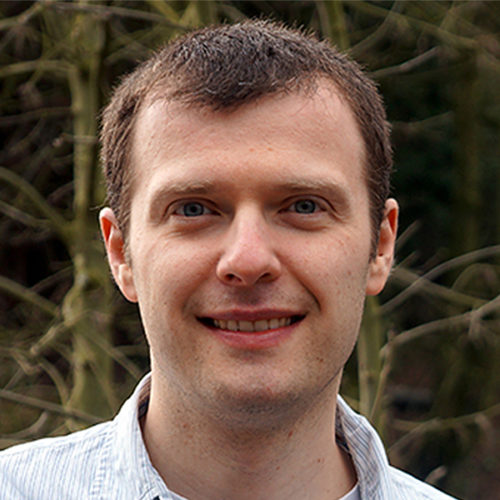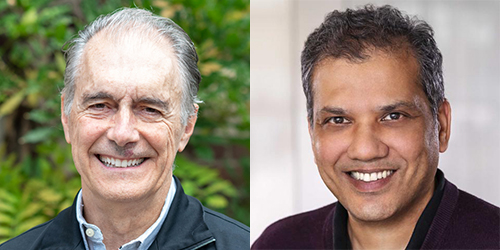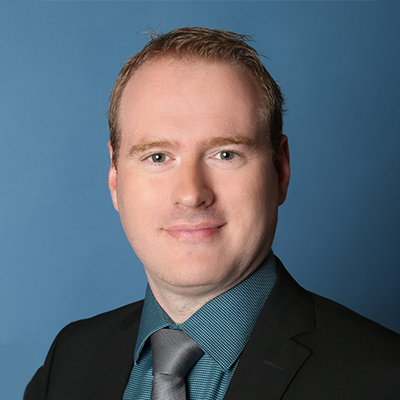Andlinger Center awards nine grants to foster collaborative research with corporate partners
By the Andlinger Center for Energy and the Environment
From identifying the roadblocks to the global energy transition to studying bacterial enzymes for better biofuels, the Andlinger Center for Energy and the Environment will support nine projects to spur solutions-oriented energy research and forge strong collaborations with corporate partners.
The awards were made through the inaugural Fund for Energy Research with Corporate Partners, which was established in 2022 as part of Princeton’s Energy Research Fund. The fund highlights the University’s commitment to support innovative energy research and underlines the critical role of energy in powering a sustainable shared future.
“The nine projects that have been funded represent the wide range of challenges currently facing the world’s energy future, and they also reflect Princeton’s broad and far-reaching energy and environmental expertise,” said Claire Gmachl, the interim director of the Andlinger Center for Energy and the Environment and the Eugene Higgins Professor of Electrical Engineering. “I see these projects as a timely investment in our shared future, and I am eager to see the collaborations these awards catalyze and the meaningful energy solutions they generate.”
The funded projects represent one of two tiers. Energy Research grants, which represent a significant shared commitment between researchers and industry collaborators, provide up to three years of project support and require a minimum 25% contribution from the corporate partner to the total project budget. Energy Seed grants, which are intended to jumpstart a new collaboration between a researcher and industry collaborator, provide support for a one-year project and require a letter of interest — but not a financial contribution — from a corporate partner. Projects were evaluated and selected by a panel of reviewers based on their intellectual merit and their potential to have transformative impacts on both the field of energy research and society as a whole.
In addition to the Fund for Energy Research with Corporate Partners, the Energy Research Fund helped to establish the Dean for Research Innovation Fund for Exploratory Energy Research, which is separately administered by the Office of the Dean for Research.
Energy research grants
Understanding the speed limits to global decarbonization efforts to inform energy systems models and policy

Meeting mid-century climate targets requires mobilizing capital and deploying energy infrastructure at a speed, scale, and level of complexity that is unprecedented in human history. And while complex energy systems models have been developed to inform clean energy policy and buildout, most models make simplifying assumptions about project development, entity coordination, and capital allocation that underestimate timelines for mobilizing the clean energy transition without new policies that directly and urgently address existing development and financing challenges.
Chris Greig, the Theodora D. ’78 and William H. Walton III ’74 Senior Research Scientist at the Andlinger Center for Energy and the Environment, will lead a research team in collaboration with Deloitte, Clean Air Task Force, and Google to incorporate real-world industrial and financial considerations into energy transition models to ensure that they provide realistic pathways for decarbonization efforts. Greig will bring together a Princeton team of researchers including Eric Larson, senior research engineer at the Andlinger Center for Energy and the Environment, Jesse Jenkins, assistant professor of mechanical and aerospace engineering and the Andlinger Center for Energy and the Environment, and Elke Weber, the Gerhard R. Andlinger Professor in Energy and the Environment and Professor of Psychology and Public Affairs.
“Current models make assumptions about the behaviors and practices of project developers and financial institutions, many of which are flawed, such as assuming that companies invest in projects in conditions of policy certainty, with significant foresight, high visibility, and seamless cooperation across sectors and supply chains,” Greig said. “We’re really trying to understand those bottlenecks and constraints to inform more realistic models.”
Greig and Larson will convene industry experts, project developers, and financial institutions to understand the critical bottlenecks facing the energy transition. They will then work with Jenkins to incorporate those factors into existing energy system models and reverse engineer realistic energy project timelines that account for such speed-limiting factors. At the same time, Greig will collaborate with Weber to survey modeling groups, policy makers, and project developers to detect and assess the underlying causes of potential optimism biases in their clean energy projections. Through their work, the research team aims to generate models grounded in the practical realities of project finance and development and identify ways to improve existing modeling efforts to create sufficiently urgent policy recommendations and project timelines.
Demonstrating the energy-savings potential of renewables-powered radiant systems
Radiant heating and cooling systems have the potential to significantly cut energy consumption in buildings in comparison to conventional air-based HVAC systems. Unlike air-based systems, which use excessively hot and cold temperatures to condition the air, radiant systems can use temperatures that are close to the desired temperature to heat and cool spaces, yielding much higher overall energy savings. However, as an evolving technology, radiant systems are often misunderstood or misused and as such, they have not yet realized their full potential to cut carbon emissions in the building sector.

Forrest Meggers, associate professor of architecture and the Andlinger Center for Energy and the Environment, is leading a demonstration project on Princeton’s campus to showcase the energy efficiency gains that can result from deploying radiant heating and cooling systems powered by renewable resources such as geothermal and solar energy. Meggers will work with Global Environmental Technologies, a leading mechanical, electrical, and plumbing (MEP) engineering consultancy in the design and manufacture of radiant panels, AIL Research, an industry expert in advancing liquid desiccant technology, and CHAOSense, a startup developing radiant sensors that spun out of Megger’s lab, to research and deploy a renewables-powered radiant system on Princeton’s campus to demonstrate, at the building scale, the full energy-savings potential of radiant systems.
“This project is aligned with a long history of my participation in campus-as-lab activities,” Meggers said. “I am excited to not only demonstrate new research in my lab but also showcase the type of systems that are being deployed campus-wide for greater energy efficiency.”
Meggers will also be joined by Jyotirmoy Mandal, assistant professor of civil and environmental engineering, who will contribute his materials science expertise to the project, as well as key campus stakeholders at Princeton’s Office of Sustainability and Princeton University Facilities to advance the project from research and planning to deployment.
“The overarching motivation behind this work is that we really need to change the paradigm of air conditioning on many fronts — high-level complex technologies all the way to social expectations of heating and cooling,” Meggers said. “And by developing and deploying a demonstration project that people can interact with and experience, we can span all of those critical domains.”
Developing more stable metal-halide perovskites

Researchers studying metal-halide perovskites have made great strides to boost their power conversion efficiencies and address many known stability issues. However, additional stability challenges remain to be resolved before perovskite solar modules can achieve widespread commercialization. Barry Rand, professor of electrical and computer engineering and the Andlinger Center for Energy and the Environment, is collaborating with CubicPV, a solar manufacturing company, to address one such stability issue in perovskites related to iodide, the halide most often used to construct metal-halide perovskites.
Iodide is both easily oxidized and highly mobile, meaning that once it becomes oxidized, it can move throughout a perovskite solar module to corrode its metal components. That corrosion quickly leads to performance losses across the solar module and eventually causes device failure. The research team is therefore investigating ways to prevent iodide from moving through the solar module after being oxidized. They seek to develop a mechanism that allows charges to be transported through a solar module while blocking or significantly slowing the movement of iodide. “If we can’t prevent iodide from being oxidized, there may still be a way to prevent the subsequent metal corrosion,” Rand said.
Through the new partnership, the researchers will combine their expertise to solve a stability challenge that has long plagued metal-halide perovskites in an effort to extend their lifespans and push them closer toward commercial viability. “We’re excited to see if some of our fundamental insights can lead to practical advances for a technology that really shows substantial promise to make a difference in the landscape of solar energy,” Rand said.
Energy seed grants
Studying the impact of carbon pricing on daily power grid operations

Electricity generation in the U.S. has changed dramatically as renewable resources achieve greater market penetration, yet their intermittent electricity generation introduces uncertainty into daily grid operations. Conversely, traditional energy sources such as natural gas and coal can operate reliably and largely independently of weather but generate substantial carbon emissions for which they do not have to account under existing paradigms. René Carmona, the Paul M. Wythes ’55 Professor of Engineering and Finance, and Ronnie Sircar, the Eugene Higgins Professor of Operations Research & Financial Engineering, will enhance a previously developed electric grid optimization software, Vatic, to compute the estimated carbon emissions from a chosen grid mix and subsequently re-inform grid operations after accounting for the cost of carbon. With the software expansion, the researchers will explore how to help grid operators plan efficiently and investigate how carbon pricing would impact the deployment of different grid resources in efforts to achieve 24/7 (hourly) net-zero electricity purchases. The project will be carried out with Siemens Smart Infrastructure – Grid Software as the corporate partner.
Evaluating North-South partnerships in long-term liquified natural gas contracting

In the aftermath of Russia’s invasion of Ukraine, Europe has found itself in a balancing act: on one hand, it must maintain its energy security, while on the other, it must strive to meet medium- and long-term emissions reduction targets. One possible solution to such a challenge could be to establish North-South joint ventures for purchasing liquified natural gas (LNG), in which two entities — one with structurally decreasing demand, for instance from the ageing Global North, and the other with structurally increasing demand, for instance from the growing Global South — agree to split a long-term LNG contract. Sylvain Chassang, professor of economics, along with co-investigator Nahim Bin Zahur, assistant professor of economics at Queen’s University in Canada, will study the emissions impacts of such joint ventures to understand if they are a viable approach for simultaneously furthering both energy security and environmental goals. The project will be carried out with the International Group of Liquefied Natural Gas Importers as the corporate partner.
Mining bacterial enzymes for better biofuels

Corn is commonly used as a feedstock for ethanol production in the U.S., yet certain parts of the corn kernel remain challenging to break down for conversion into ethanol. Jonathan Conway, assistant professor of chemical and biological engineering, will lead a project to identify, produce, and characterize enzymes that can break down the hemicellulose components of corn kernel fiber in order to increase biofuel production efficiency. Conway will explore microorganisms known to be capable of digesting corn kernel fiber to identify genes that may be responsible for producing the fiber-digesting enzymes. He will synthesize those genes to produce the desired enzymes, and then study their efficiency at breaking down corn kernel fiber to identify the most promising enzymes for additional study. The project will be carried out with Novozymes as the corporate partner.
Modeling missing data on electricity networks in sub-Saharan Africa

Millions of people in sub-Saharan Africa lack reliable access to electricity. However, incomplete and unreliable data on existing power grids in the region means it is difficult to plan infrastructure policies and investments in affordable electricity. Jürgen Hackl, assistant professor of civil and environmental engineering, will develop a multi-layer network model to help predict the layout of electricity networks in sub-Saharan Africa given the current uncertainties. By being able to provide reliable data on the power grid in the region, Hackl’s work will empower various stakeholder groups to make informed policy decisions and infrastructure investments to provide affordable and reliable electricity access to millions of people. The project will be carried out with WSP as the corporate partner.
Ammonia combustion and emissions: effects of “cracking” stratification

Ammonia has emerged as a promising zero-carbon energy carrier, since it is more energy dense and easier to store and transport than hydrogen. However, ammonia is difficult to burn, and ammonia combustion can lead to significant emissions of nitrogen oxide air pollutants, especially when ammonia is partially cracked into hydrogen and nitrogen before burning. Michael Mueller, professor of mechanical and aerospace engineering, will explore a new ammonia combustion strategy, in which ammonia is cracked such that the resulting fuel contains separate ammonia-rich and hydrogen-rich regions. If successful, the “cracking” stratification approach could reduce overall nitrogen oxide emissions and could therefore be a viable ammonia combustion technology meriting further exploration. The project will be carried out with General Electric (GE) as the corporate partner.
Investigating the green hydrogen economy’s water problem

Clean hydrogen produced via electrolysis could emerge as a critical fuel for a sustainable future. However, electrolyzers currently require a large supply of clean water to produce hydrogen, which raises concerns about the environmental impacts of widespread electrolysis, especially in water-stressed regions of the U.S. Z. Jason Ren, professor of civil and environmental engineering and the Andlinger Center for Energy and the Environment, and Anthony Ku, former non-resident fellow at the Andlinger Center for Energy and the Environment, will analyze the hydrogen-water nexus to develop frameworks that ensure sufficient and reliable water supply for the scale-up of a hydrogen economy. The researchers will study the feasibility of using impaired water sources, such as wastewater, as alternative inputs for electrolysis. The researchers will also study the distribution of such impaired water sources to identify areas of the U.S. with water resources suitable for hydrogen production via electrolysis, which will act as a blueprint for future hydrogen development. The project will be carried out with New Jersey Resources as the corporate partner.